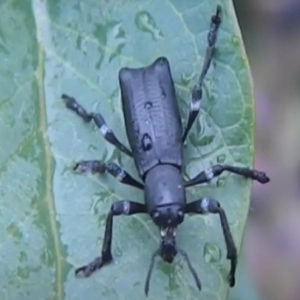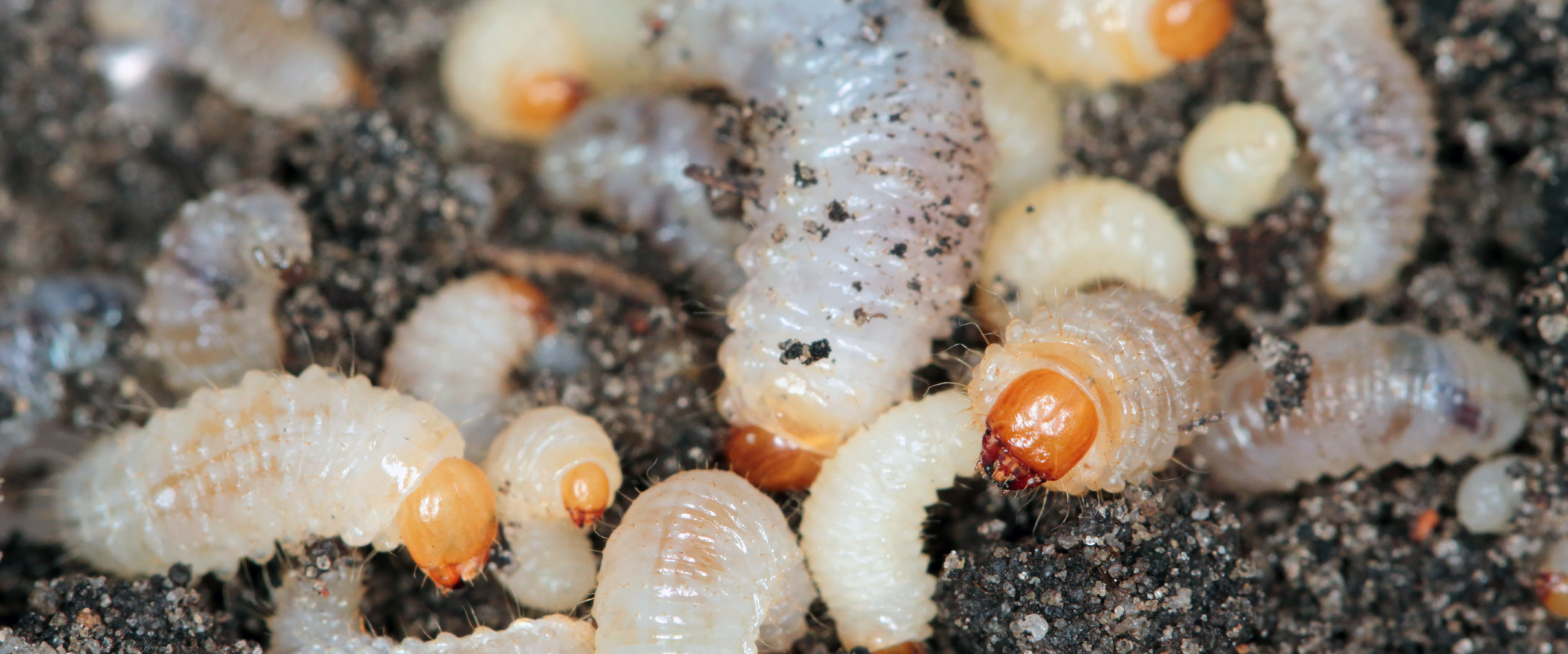The plum weevil (Aegorhinus nodipennis) also known as the cabrito del ciruelo (in Spanish) is native to Chile and Argentina. It is considered a key pest in organic blueberry and European hazelnut orchards, although it can affect both fruit trees and native trees. The adult is 2 to 3 cm long, smooth and bright colored with scale areas which give it a characteristic coloration. Males are smaller than females and found in a much smaller proportions. Their yellowish-white eggs are mostly laid on the ground singly or in groups of 2-3 and covered by feces. The larvae are white with a dark head and once it reaches its latter stage, it prepares a cell inside the crown and turns into a pupa.
Damage
Adult weevils feed on the petioles of flowers and fruits causing premature fall. The greatest damage is caused by the larvae (C-shaped grubs), which, recently hatched, move through the leaf litter and reach the bark of the neck and crown of the plant, where they first feed on the surface and then build galleries in the wood. The damage of the larvae to the neck and crown of the plants, generates a characteristic symptomatology: premature redness, yellowness, reduction of new twigs, lower production and death of the plant.
There are specific natural enemies for weevils.
For more information contact your local BioBee field agent.








